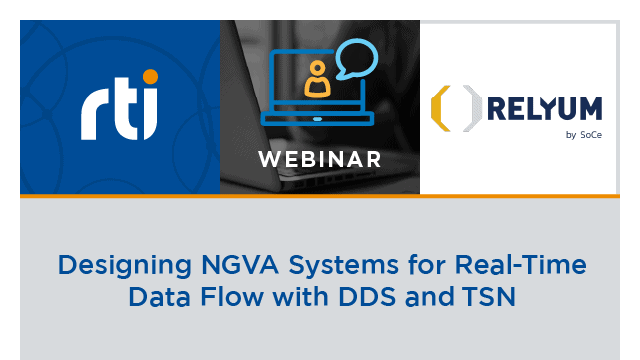
For a new generation of military vehicles, the NATO Generic Vehicle Architecture (NGVA) provides a highly reliable approach to platform design and integration. But to take it to the next level and achieve important new strategic imperatives such as optimizing ground missions, NGVA systems demand a key capability: continuous access to new, real-time data that can also be delivered over remote, long-distant terrain.
Two software standards play an important role in enabling real-time data flows in the NGVA vehicle architecture. Firstly, Data Distribution ServiceTM (DDS) sits close to the application and provides an open framework to enable determinism, reliability, scalability and availability. The second part of the solution is Time-Sensitive Networking (TSN), which offers a lower-level network technology enabling deterministic messaging over standard Ethernet. Together, they provide standard data models that enable deterministic communications in NGVA systems using commercially-available technologies. The result is a simplified network structure that creates significant performance improvement by enforcing real-time Quality of Service (QoS) for critical traffic flows.
Join RTI and SoC-e to learn how DDS and TSN work in NGVA architectures in a fast-paced, 30-minute webinar with Q&A. We’ll review key aspects of NGVA, including:
- Why DDS and TSN improve communication in NGVA systems
- How these standards process data
- How each standard is applied to NGVA environments
- How it all works together: An NGVA-DDS-TSN case study
- How to get started: Attendee Q&A
Presented by Fernando Garcia, Principal Software Engineer, RTI & Alicia Alonso, Business Development Manager, SoC-e

















